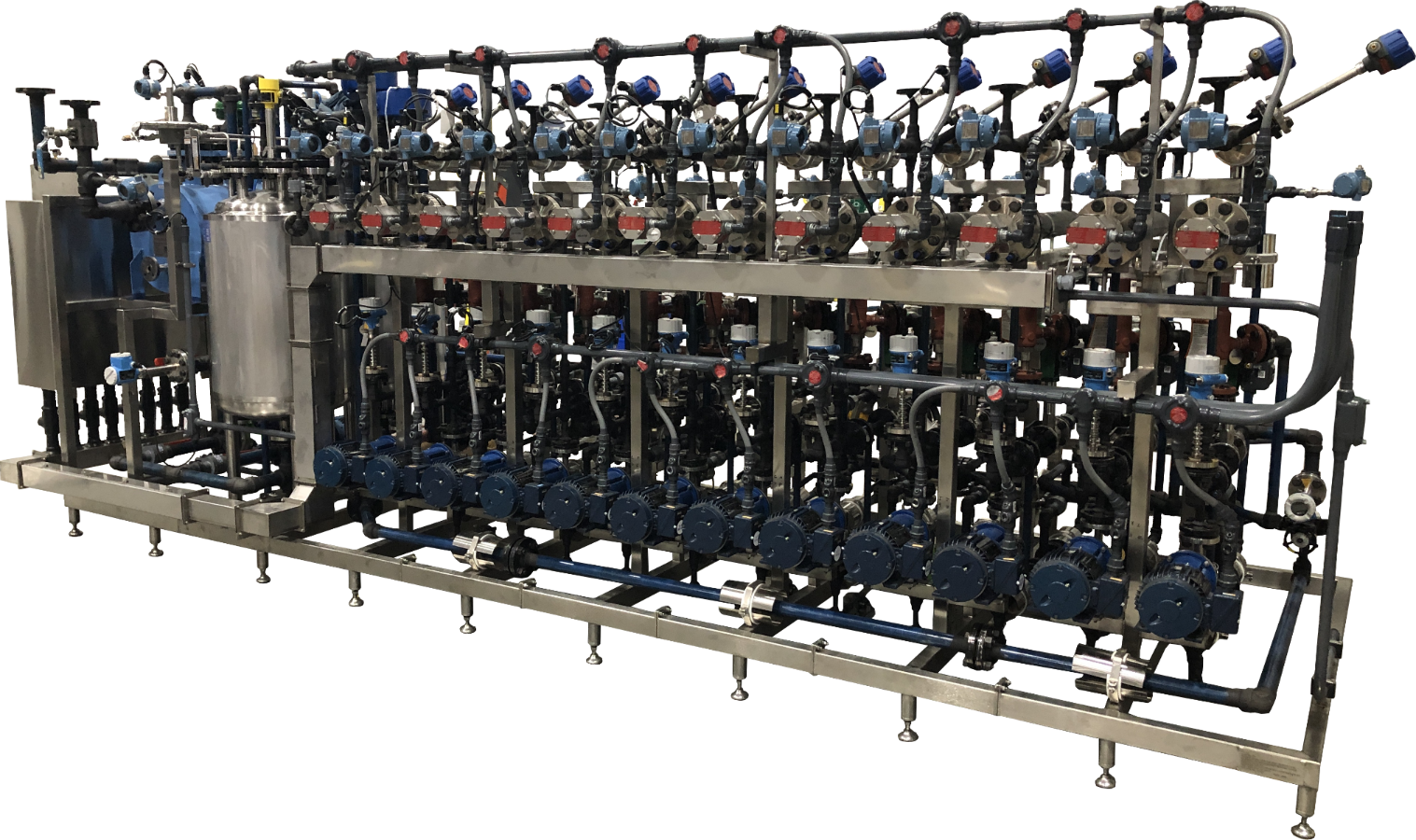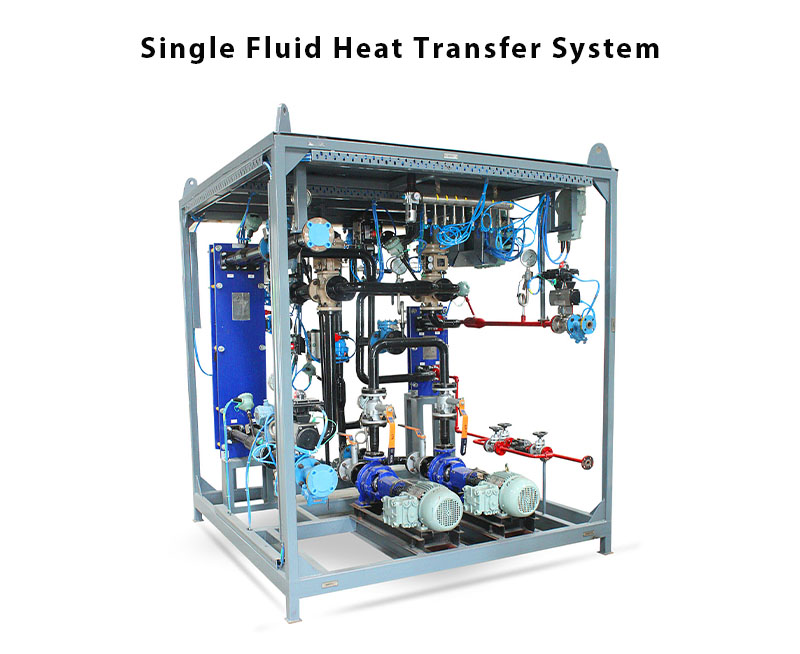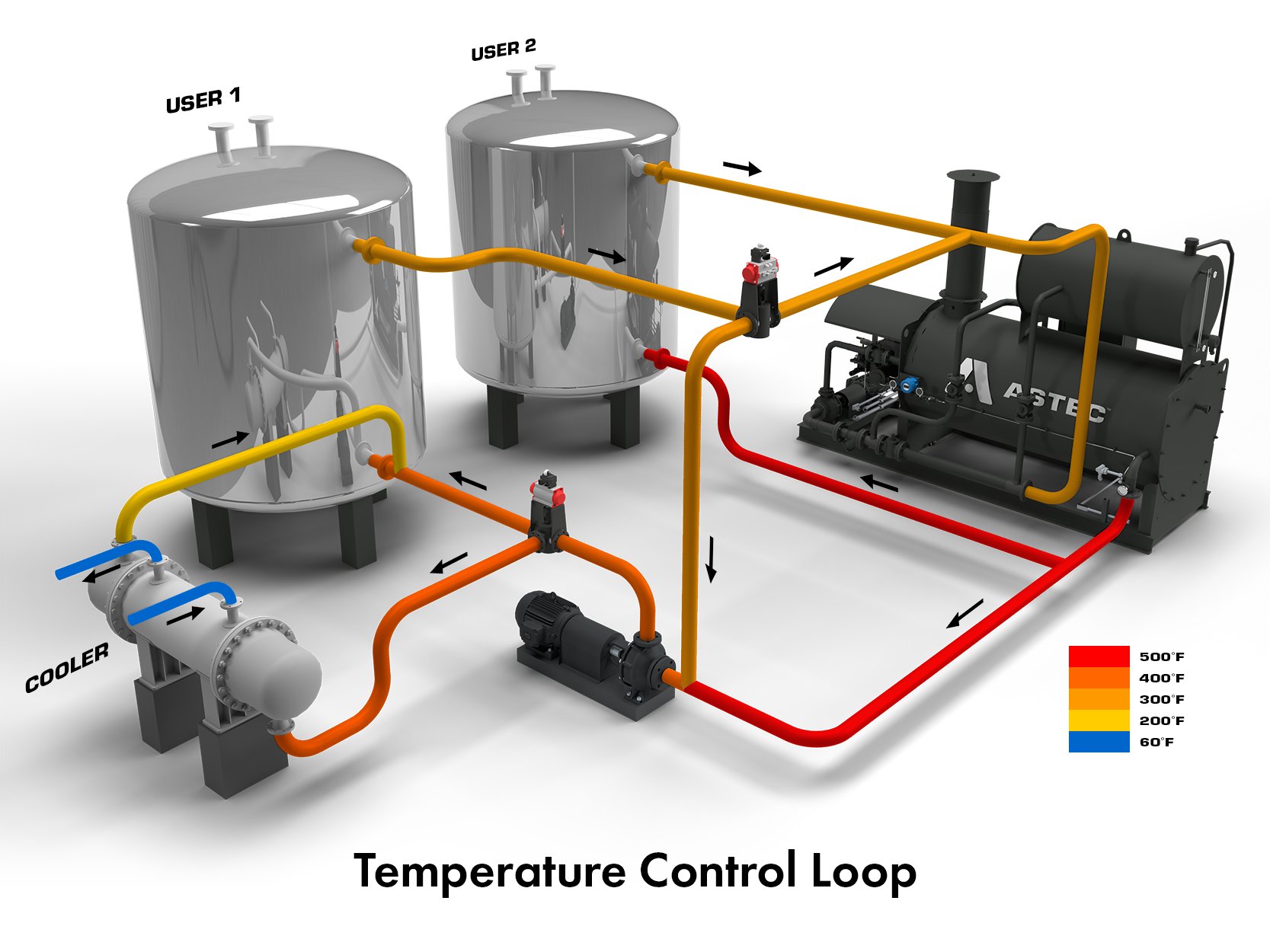Advancements in Heat Transfer Systems: What You Required to Know for Optimum Performance
Advancements in Heat transfer systems are changing efficiency across numerous markets. Advanced products like graphene and nanofluids promise considerable enhancements in thermal conductivity. The combination of IoT and device understanding provides opportunities for real-time monitoring and boosted energy efficiency. However, the landscape of thermal management is rapidly progressing (DVS Heat Transfer Systems). Understanding these growths is necessary for achieving ideal system efficiency and sustainability in the future. What details improvements are forming this makeover?
Arising Materials for Boosted Heat Transfer

Advanced Heat Exchanger Styles
While standard Heat exchangers have served their purpose in various applications, progressed layouts are now arising to meet the increasing demands for performance and efficiency. These innovative layouts, such as plate, shell-and-tube, and finned-tube Heat exchangers, include improved surface and improved flow patterns to raise thermal transfer rates. On top of that, portable designs enable minimized space demands without endangering efficiency. Advanced materials, such as compounds and corrosion-resistant alloys, furthermore enhance longevity and efficiency under extreme problems. Simulation technologies and computational liquid dynamics are progressively utilized to refine these styles, ensuring peak Heat transfer features. As industries look for to reduce power consumption and make the most of outcome, the adoption of innovative Heat exchanger layouts is essential in attaining these objectives.
The Duty of Nanotechnology in Heat Transfer
Nanotechnology plays a crucial function in boosting thermal conductivity within Heat transfer systems. By adjusting materials at the nanoscale, researchers have actually achieved considerable renovations in energy effectiveness. These developments not only maximize efficiency yet likewise add to more sustainable power remedies.
Improved Thermal Conductivity
Substantial developments in thermal conductivity have emerged through the application of nanotechnology, reinventing Heat transfer systems throughout various sectors. By integrating nanoparticles into Heat transfer liquids and materials, scientists have attained exceptional increases in thermal conductivity. These nanoparticles, such as carbon nanotubes, graphene, and steel oxides, improve the Heat transfer residential properties as a result of their high surface area and one-of-a-kind thermal features. The resulting composites display enhanced efficiency in applications ranging from electronic devices cooling systems to sustainable energy innovations. Furthermore, the capability to customize the dimension, shape, and composition of nanoparticles enables for optimized thermal management remedies. Therefore, nanotechnology continues to play an essential role in the growth of more effective and effective Heat transfer systems, leading the way for boosted industrial applications.
Power Efficiency Improvements

Integration of IoT in Heat Transfer Solutions
The integration of IoT in Heat transfer systems presents the application of smart sensors that boost functional performance. These sensors make it possible for real-time information tracking, permitting for prompt adjustments and optimizations. This technological advancement has the prospective to considerably additional hints boost efficiency and energy management in Heat transfer applications.
Smart Sensors Application
As Heat transfer systems advance, the combination of wise sensors with the Web of Points (IoT) has actually emerged as a transformative technique. These sensors enable real-time monitoring of more tips here circulation, pressure, and temperature level prices, enhancing system effectiveness and dependability. By gathering and sending data, they assist in positive maintenance, decreasing the threat of system failings. Additionally, clever sensing units add to energy cost savings by refining operational parameters based upon ecological problems. Their capability to analyze anomalies and trends permits educated decision-making, guaranteeing peak efficiency of Heat transfer systems. As markets progressively embrace this technology, the implementation of smart sensors stands to revolutionize exactly how Heat transfer systems are managed, paving the means for greater sustainability and enhanced efficiency outcomes.
Real-Time Information Surveillance
How can real-time data checking enhance the performance of Heat transfer systems? By integrating Internet of Things (IoT) technology, Heat transfer systems can take advantage of continual information collection from smart sensors. This real-time monitoring enables prompt evaluation of stress, flow, and temperature level prices, allowing operators to identify ineffectiveness without delay. Modifications can be made to enhance efficiency, reduce power intake, and expand devices life expectancy. Furthermore, anticipating maintenance can be implemented, lessening unforeseen downtime and costly repair services. The capacity to envision performance metrics with control panels improves decision-making, promoting a positive technique to system administration. Inevitably, real-time information keeping track of not just enhances operational efficiency yet also adds to sustainability objectives within commercial processes.
Power Effectiveness and Sustainability Trends
Energy efficiency and sustainability fads are improving the landscape of Heat transfer systems, driving innovation and conformity throughout numerous industries. Organizations are increasingly focusing on energy-efficient designs to lower functional expenses and reduce environmental influences. The combination of sustainable power sources is ending up being much more common, making it possible for Heat transfer systems to operate sustainably while satisfying governing needs. In addition, improvements in products and modern technologies promote reduced energy usage and enhance total efficiency. Lifecycle evaluations are additionally obtaining traction, permitting business to examine the ecological influence of Heat transfer systems from manufacturing to disposal. This concentrate on sustainability not just supports company obligation but likewise placements companies competitively in a market where customers significantly prefer eco-friendly solutions. Subsequently, power efficiency and sustainability remain essential considerations for future developments in Heat transfer innovation.
Developments in Thermal Management Solutions
While the demand for reliable Heat transfer proceeds to rise, developments in thermal administration remedies are emerging to attend to both performance and sustainability difficulties. Advanced materials, such as phase change products and nanofluids, are being developed to boost Heat transfer performance - DVS Heat Transfer Systems. These materials enhance thermal conductivity and enable much better temperature regulation in different applications. Furthermore, technologies like visit this website energetic thermal control systems are acquiring grip, making it possible for real-time adjustments to take care of Heat flow properly. These systems add to power cost savings and reduce the ecological influence of thermal processes. Additionally, the integration of IoT in thermal management helps with surveillance and predictive upkeep, guaranteeing enhanced efficiency and durability of Heat transfer systems. Generally, these innovations represent considerable strides towards even more lasting thermal management practices
Future Directions in Heat Transfer Innovation
Emerging developments in thermal administration solutions signal a promising future for Heat transfer technology. Scientists are progressively concentrating on establishing materials with exceptional thermal conductivity and enhanced energy effectiveness. Advancements such as nanofluids, which have put on hold nanoparticles, supply considerable renovations in Heat transfer performance. Additionally, the assimilation of clever materials that adjust to differing temperature problems is getting traction, permitting even more efficient and responsive systems. The increase of additive manufacturing methods is additionally enabling the style of complicated Heat exchanger geometries that enhance liquid flow. The implementation of maker understanding algorithms is anticipated to change the optimization of Heat transfer systems, promoting predictive upkeep and performance enhancement. Collectively, these improvements are positioned to transform the landscape of Heat transfer modern technologies in numerous industries.

Often Asked Inquiries

Just how Do I Select the Right Heat Transfer System for My Application?
Picking the right Heat transfer system involves assessing application requirements, including temperature level ranges, liquid residential properties, and performance demands. Examining system kinds, maintenance considerations, and cost-effectiveness likewise plays a crucial function in making a notified choice.
What Are the Maintenance Demands for Advanced Heat Exchangers?
Maintenance requirements for innovative Heat exchangers usually consist of regular examinations, checking for leakages, cleaning of surfaces, and guaranteeing excellent flow prices. Sticking to supplier guidelines guarantees effective operation and lengthens the equipment's life expectancy.
Just How Do Ecological Elements Impact Heat Transfer Performance?
Ecological aspects substantially influence Heat transfer performance. Variants in humidity, temperature, and airflow effect thermal conductivity and convective Heat transfer, inevitably influencing system efficiency and requiring consideration during the style and operation of Heat transfer systems.
What Security Criteria Put On Heat Transfer Equipments?
Security requirements for Heat transfer systems usually consist of standards from organizations such as ASME and ASTM. DVS Heat Transfer Systems. These standards address products, style, and functional methods to ensure reliability, performance, and protection versus dangers in different applications
Exactly How Can I Repair Common Heat Transfer System Issues?
Fixing typical Heat transfer system issues entails looking for leakages, ensuring proper fluid flow, evaluating insulation honesty, and verifying temperature level differentials. Determining these variables can help keep system effectiveness and prevent more issues.
Nanotechnology plays an important duty in boosting thermal conductivity within Heat transfer systems. Substantial innovations in thermal conductivity have emerged through the application of nanotechnology, revolutionizing Heat transfer systems throughout different markets. Developments in thermal conductivity with nanotechnology have actually paved the way for remarkable renovations in power performance within Heat transfer systems. Power performance and sustainability patterns are reshaping the landscape of Heat transfer systems, driving technology and compliance throughout numerous industries. The integration of IoT in thermal administration helps with tracking and anticipating maintenance, guaranteeing enhanced efficiency and durability of Heat transfer systems.